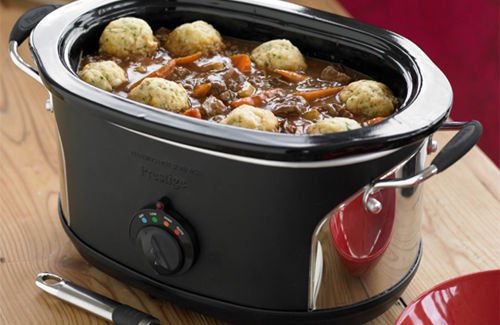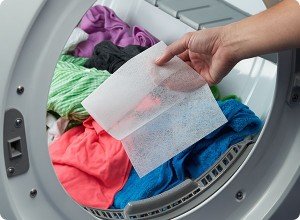The Hidden Danger in Your Slow Cooker
5 min read
In the 1970s, the electric slow cooker became almost as popular as disco music and pet rocks. Nearly every household in America had at least one “Crock Pot.” And for good reason…
This kitchen appliance is easy to use and makes clean up a snap. And what’s not to love about the convenience of investing just a few minutes of prep time to have a fresh, hot meal ready at the end of the day.
As you probably already know, the slow cooker has made a dramatic resurgence in recent years. And it’s not just for their convenience (although that’s still a top selling factor).
It’s also because “slow cooking” is a very healthy way to cook. Cooking “slow and low” in a sealed chamber helps to keep the moisture and the nutrients in your food. It also helps to prevent the formation of cancer-causing compounds – such as lipid oxidation products (LOPs) and heterocyclic amines (HCAs). These dangerous compounds form when certain fats and most meats are cooked at high temperature.
Unfortunately, there is a potential danger lurking in your slow cooker that you may not know about: LEAD!!!
The Dangers of Lead
Lead is a neurotoxic heavy metal and a systemic poison that affects every organ in the body.
The medical consensus is that there is no safe level of lead exposure. And while the health risks of lead are great for all of us, they are especially harmful to children, who absorb a higher proportion per body weight and are more vulnerable to its effects.
What’s more, lead exposure is cumulative over time. According to the Mayo Clinic:
“Lead poisoning occurs when lead builds up in the body, often over a period of months or years. Even small amounts of lead can cause serious health problems.”
So while one serving of food prepared using contaminated cookware won’t kill you, over the years, it could lead to lead poisoning. In adults, lead poisoning is linked to the following:
- Increased chance of illness during pregnancy.
- Harm to a fetus, including brain damage or death.
- Fertility problems (in men and women).
- High blood pressure.
- Digestive problems.
- Nerve disorders.
- Memory and concentration problems.
- Muscle and joint pain.
- Cancer.
In children it is linked to:
- Learning disabilities
- Developmental delays
- Lower IQ scores
And what’s more, lead poisoning is often “silent” with no obvious symptoms.
Is Your Slow Cooker Leaching Lead?
In 2004, Bill Gebhardt of Salt Lake City’s KUTV investigated the lead content in a number of kitchen tools, including slow cookers. In his investigation, he took a number of slow cookers to the Data Chem Lab in Salt Lake where they were analyzed for lead.
His analysis found that 20% of slow cookers were leaching measurable amounts of lead into food.
When ceramic vessels are heated to just 80 degrees Fahrenheit, they release ten times the amount of lead than they do at room temperature. And slow cookers heat up to more than 250 degrees Fahrenheit.
While temperature is part of the equation, time and acidity also impact lead leaching. This means that acidic ingredients like vinegar, tomatoes or citrus, as well as longer cooking times will cause more lead to be released from the vessel and into the food.
From the reports available on the topic, most of the lead leaching is believed to come from the glaze – the smooth, often brightly-colored coating on the inside of the slow cooker vessel. This is because lead compounds, such as lead oxide, have historically been used in glaze formulations.
A vast majority of slow cookers state that their products do not contain leaded glaze or that their slow cooker is in accordance with government guidelines for lead (the FDA Complaince Policy states that leach levels of 1 mcg/mL are acceptable for large vessels such as slow cookers).
However, these levels do not necessarily infer safety. Nor is this level indicative of the actual leaching that can occur with normal cooking and the variables of time, temperature or acidity of ingredients.
Many other companies purport that their product is “safe” as long as there is no cracking, chipping or haziness of the glaze. But that isn’t a very reassuring statement given the fact that micro-fissures could be undetectable to the eye and lead is a systemic poison with cumulative effects.
And how about unglazed inserts? These too can pose an issue as lead is naturally found in all ceramic materials and clay.
Prop 65 and Lead Contamination in Slow Cookers
While the FDA guidelines (and even individual companies) are unhelpful in regards to determining how much lead your slow cooker may be leaching,California Prop 65 – The Safe Drinking Water and Toxic Enforcement Act of 1986, can provide additional clarity on this murky issue.
Per this initiative, warning labels must be placed on products that exceed specified limits of harmful chemicals – including lead. But here’s the thing… the limits are typically 10 to 1,000 times lower than FDA requirements.
With Prop 65, you can determine if your slow cooker leaches more than 0.1 parts per million of lead (this is 10 times LESS than the FDA limit of 1.0 ppm or 1 mcg/ml).
An easy way to find out if your slow cooker is subject to Prop 65 labeling? Check out Amazon. Look under the “Product Details” section. If the item has a Prop 65 label, there will be a statement:
“California residents: click here for Proposition 65 warning.”
While this provides an added layer of protection from what the FDA mandates, unfortunately, amounts of lead even below the Prop 65 limit of .1 ppm can be measurably harmful (especially for developing fetuses and children).
How to Protect Your Family from Lead Exposure
In this day and age, there are many potential hazards in our food supply and cookware.
Here are three ways you can help protect your family from lead exposure:
- Go Inert: Opting for tried-and-true inert cookware – including glass (like Pyrex), stainless steel, cast iron, and enameled cast iron. Always do your research before purchasing.
- Avoid “Made in China”: Do not buy glazed plates or cooking items that come in contact with food that are made in China – they have less regulation on chemical contamination.
- Detox Naturally: Detoxify from heavy metals with a gentle, natural detoxifying solution like Natural Cellular Defense.
References
- Levin, Ronnie, et al. “Lead Exposures in U.S. Children, 2008: Implications for Prevention,” Environmental Health Perspectives, 2008 October; 116(10): 1285–1293. Published online 2008 May 19. doi: 10.1289/ehp.11241, Bellinger, David, C., Harvard Medical School. “Very low lead exposures and children’s neurodevelopment,” Current Opinion in Pediatrics: April 2008 – Volume 20 – Issue 2 – p 172-177,
- Brown, Mary, Centers for Disease Control. “Interpreting and Managing Blood Lead Levels <10 micrograms/dL in Children and Reducing Childhood Exposures to Lead; Recommendations of CDC’s Advisory Committee on Childhood Lead Poisoning Prevention,” CDC, Nov. 2, 2007
- Brody, Jane E. “Personal Health; Even Low Lead Levels Pose Perils for Children,” New York Times, Aug. 5, 2003
- “CPG Sec. 545.450 Pottery (Ceramics); Import and Domestic – Lead Contamination,” issued 10/1/80; revised 4/16/92, 12/12/95 (60 FR 63721), 5/2005; updated 11/29/05:
- Time, temperature, and acidity: Hight, S. C., et al. “Lead and Cadmium Release Under Conditions of Consumer Use: FDA Experiments With Cookware, Glass Tumblers, Lead Crystal Baby Bottles, And Ceramic Mugs,” Ceramic Transactions, Vol. 61 , pp. 11-22, 1995:
- “Policy Statement Concerning Lead Leaching From Glass Tableware Into Foodstuffs,” Partial Agreement in the Social and Health Field, Council of Europe Public Health Committee
- California Office of Environmental Health Hazard Assessment, http://oehha.ca.gov/prop65.html
- Cheng, John, FDA. “Elemental Analysis Manual: Section 4.6: Inductively Coupled Plasma-Atomic Emission Spectrometric Determination of Cadmium and Lead Extracted from Ceramic Foodware,” August 2010
- “Draft Lead Report,” California Department of Toxic Substances Control, Hazardous Waste Management Program Regulatory and Program Development Division, August 2004.
- FDA. CPG Sec. 545.450 Pottery (Ceramics); Import and Domestic – Lead Contamination



